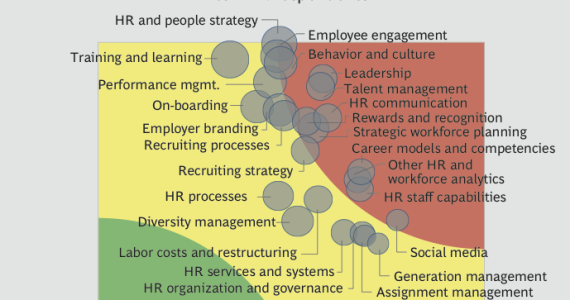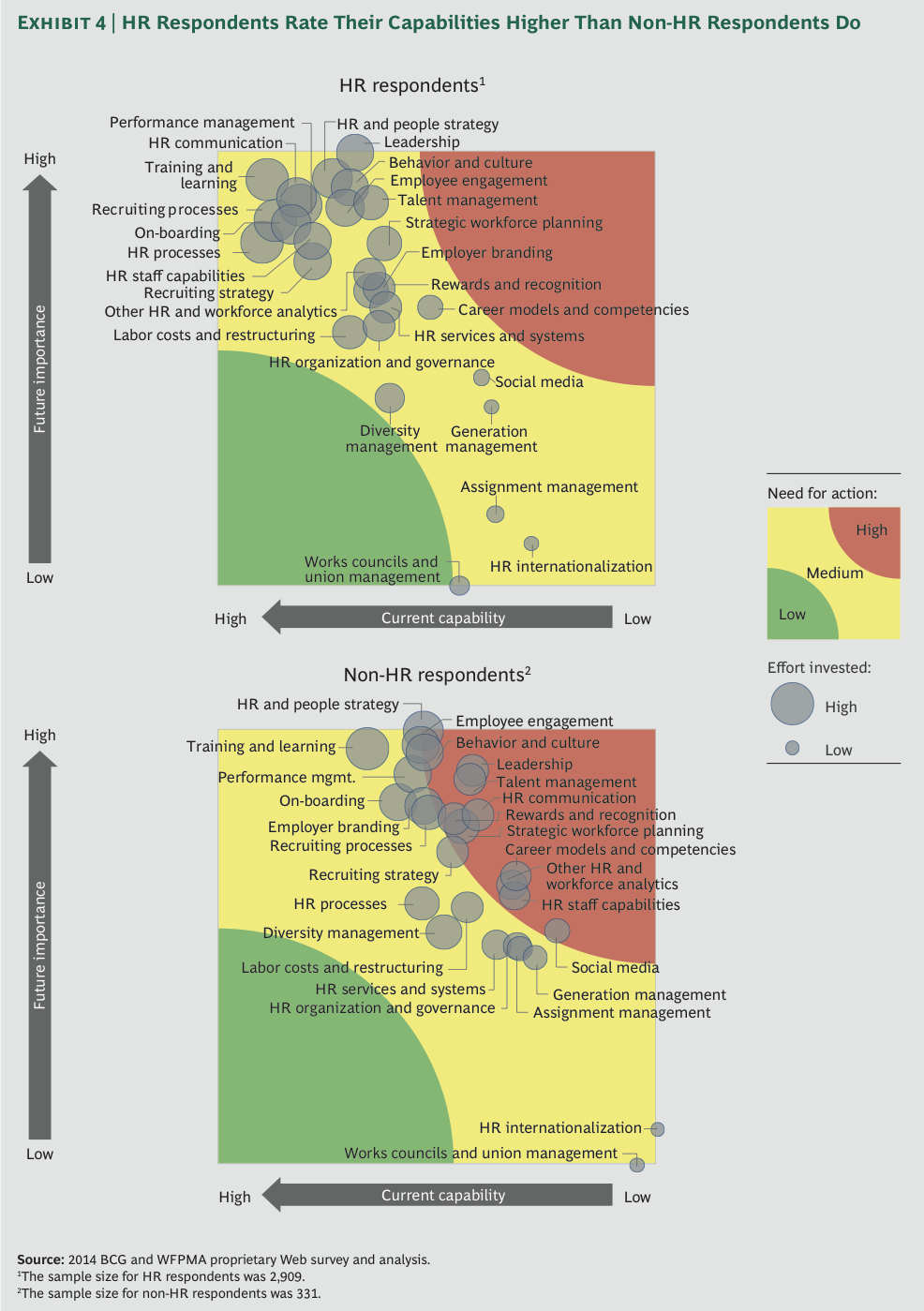
Can HR really manage Leadership and Talent?
For four years in a row now, participants agree, that “Managing Talent” is most important, closely followed by “Improving Leadership Development”. This year, the slightly rephrased “Leadership” comes out first, “Managing Talent” second. This means, that organizations not today nor tomorrow feel capable enough to be lead – but is this already indicator enough to intensively take action?
As HR is seen responsible for leadership and talent, the report marks three “hallmarks of great HR” to guide the HR community:
- They connect by partnering with stakeholders inside and outside the company to improve operational and financial performance.
- They prioritize by using data driven insights to identify and focus on the most urgent HR priorities.
- They create an impact by using KPIs and steering tools to support the organization and its strategic goals.
This seems to go hand-in-hand with Ram Charan’s proposal in the summer issue of HBR. To tackle the exuberant transactional parts, he proposes to split HR into an HR-A (for administration) which then reports into the COO, and an HR-LO (for leadership and organization) which reports into the CEO.
Charan’s HR-LO should be led by high potentials who prepare for a lift to the upper layers of the organization. This would strengthen their competencies in judgement and people development, and they would prepare to link the social context to the financial one. Coming from business functions, they would not have to argue ‘to sit at the table’ which is an often heard wish of HR directors.
In his answer to Charan’s provocative article, HR guru Dave Ulrich seems to defend his HR business partner model for the majority of employees, yet he adds to Charan, that high potentials should focus on organizational capability next to talent and leadership. Ulrich also is in line with the outside-in view, which only does not lead him to the complete dissolution of classical HR.
What I am missing in all three conclusions, is the fine tune, that makes the difference between Human Resources and People Management. We need leaders who know about the outside-in managing part of the business and additionally have an HR-LO personality enough to establish sustaining relationships. And we need people who are good at letting high potentials grow into larger roles – but why should this be a group separate from the leaders (like most in HR)? Why don’t we see the best leaders taking the responsibility of leadership, although we know about the value of leader-led development?
In times, where Leadership and Talent keep being the most important challenges, we should have much more discussion how to do it, what HR or People Management really can deliver, and what this means for the rest (or the core?) of the organization. This should strengthen an eventual HR in its role to drive the people side of leadership – and it might move leadership out of the top ranks in the BCG/WFPMA heat map one day.
NB. Yet interestingly, the HR view on their capabilities is a little bit more optimistic than this…
